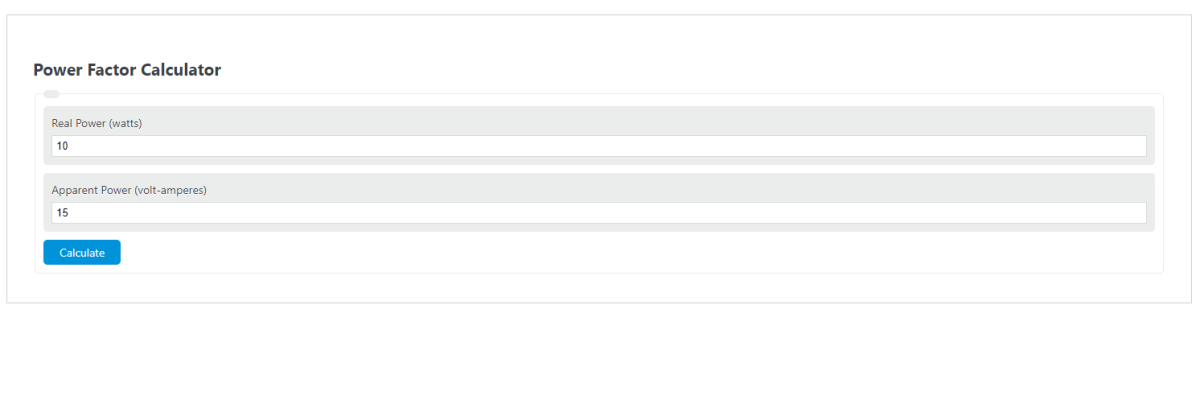Enter the real power and the apparent power into the calculator to determine the power factor.
- All Electrical Calculators
- Apparent Power Calculator
- Reactive Power Calculator
- KVAR Calculator
- Power Factor to Voltage Calculator
Power Factor Formula
The following equation is used to calculate the Power Factor.
PF = RP / AP
- Where PF is the power factor (Watts/(Volt-ampere))
- RP is the real power (Watts)
- AP is the apparent power (volt-amperes)
To calculate the power factor, simply divide the real power by the apparent power.
What is a Power Factor?
Definition:
A power factor is a ratio between real and apparent power. It is the cosine of the phase angle between a sinusoidal voltage or current and its corresponding phase.
The power factor is positive if it has a value greater than 1.00. A negative value indicates that reactive energy is being supplied to, or taken from, the load.
This can be either an inductive or capacitive load, as these are both represented by a negative reactive component in electrical circuits. However, a purely resistive component load will have a positive power factor, even though it may be consuming reactive energy.
The Power Factor is a very important consideration for UPS users.
Power factors below 0.80 result in increased energy costs to the user without any corresponding increase in lighting or electrical load capacity. There may be little or no load at all!
Few motors operate at less than 80% efficiency, so it follows that running them at less than 80% efficiency will result in decreased motor life and increased operating costs due to increased motor heating.
